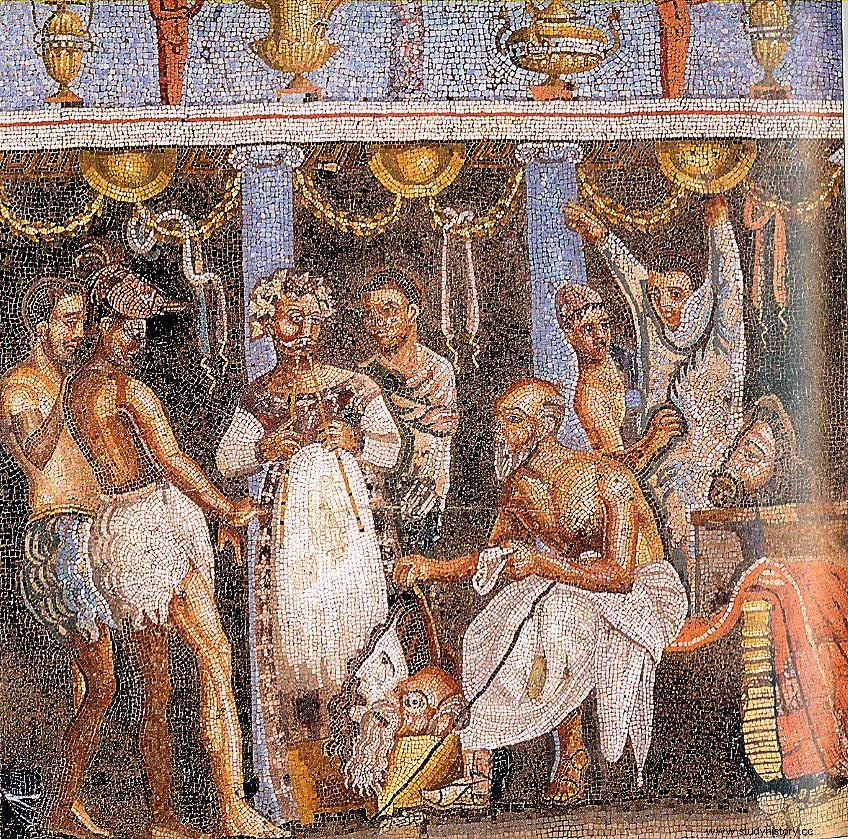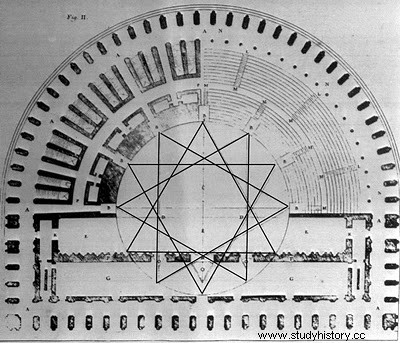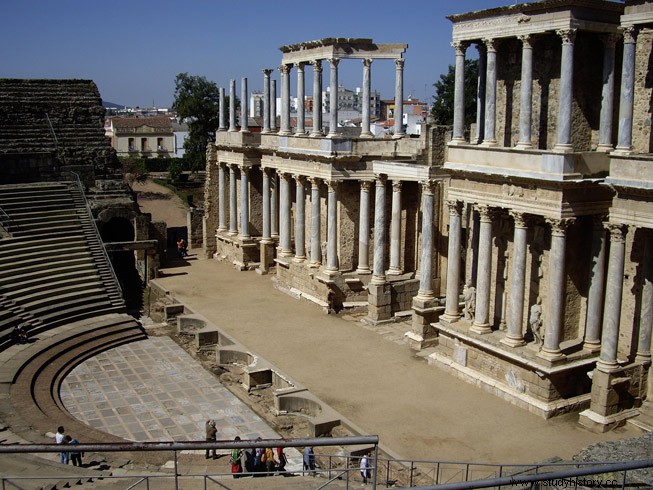To this day we still enjoy a good work of fiction as much as an exciting sporting spectacle. With a more limited capacity to be able to have a good vision and hearing of the scene, we squeezed into rows of seats, eating trifles waiting for a group of actors to surround us with their tragedies and jokes and evade us from everyday worries. Today we call it cinema, although it has always been theater.
Perhaps, together with the Olympic Games, it is the only public hobby from Antiquity that has survived almost intact to this day. Rome, since it conquered Greece and assimilated its extraordinary cultural legacy as its own, began to value theater as a natural form of civic expression, a way to temporarily free itself from the painful day-to-day with the vicissitudes or banalities of a group of actors. willing to distract the public with their accused declamations, nothing valued, by the way; actor was one of the most denigrating professions of the time...

Mosaic actors
At first, the theatrical performances were only occasional, framed within some festivity or tribute without having dedicated buildings for them; They were paid for by the political office in power to tame the plebs and took place in wooden enclosures that were dismantled after the performances. But not because they were temporary, those floors were less showy; it is known that some of them were also covered with good columns, statuary and noble materials.
Such a sparse and ungrateful public activity did not allow for the flourishing of new authors, so the theatrical offer was subordinated to Latin translations of classic Greek works, losing much of its hilarity or sensitivity in the process. So it was until a certain Titus Macius Plautus , a veteran auxiliary of the Punic Wars, revolutionized the theatrical offer of the city. Plautus, after years of hardship, renewed the Latin theater with his purely Roman comedies which, lacking in Greek refinement, sarcastically transferred the idiosyncrasies of the people of his time without resorting to copies of the Greek works of Aristophanes, Diphius , Philemon or Menander . These were hard times for Rome and her rulers did not ask for tragedies, since Hannibal already caused them by himself; Citizens had to be encouraged. Obscenities and rudeness, delirious situations, slaves, dirty old men, merchants, sailors, prostitutes, soldiers, youngsters, flutists, all of them starred in his hilarious comedies (some of them can still be seen on occasion at the summer festival “Sagunt a Escena” , such as Asinaria or Miles Gloriosus )
The first theater as such erected in stone was a whim of Pompeyo el Grande in 55 BC To save the senatorial law that forced the demolition of these enclosures once the functions were over, Pompey built a temple inside it dedicated to his protector, Venus Vitrix . This was the first marble building in ancient Rome and its steps were mute witnesses to the assassination of Caesar the idus March 44 BC
With the end of the bloody civil wars, the true embellishment of the old Republic began. It was from the principality of Augustus that many of these works were promoted throughout the provinces, always carried out according to the pattern of one of the most prolific engineers of the ancient world:Marcus Vitruvius Pollio .
The image of the Roman theater that we have in mind today corresponds exactly to the architectural model of Vitruvius (an explicit sample of it can be seen in the Museum of the Roman Theater in Cartagena or in Zaragoza) According to him, he stated “after having designed the market square, a very good site had to be chosen for the theater, where people could witness the dramas on the feast days of the immortal gods ”
Basically, the building structure was this:
- The scene , or scenae frons , generally composed of two floors of columns and statuary. Before her was the proscenium , the highest place where the theatrical performance took place.
- Orchestra , or plata , central nucleus of the circumference around the proscenium reserved for personalities. The altar was located there.
- Cavea , the stands of the theater, divided in turn by the access corridors (aditus) and whose concentric accommodations were reserved for the different social classes (Inma , average and summa cavea for the aristocracy, commoners and outsiders and women without a partner and slaves respectively) A large flannel canvas moved by ropes and pulleys could cover the stands to alleviate the effects of the sun on the spectators.
- Vomitory , the inputs to the cavea from the outside.

Bacchic_Theatre
Their dimensions corresponded to the population and importance of the city where they were located; so we have from a large approximate capacity of 10,000 spectators in the theater of the colony Clunia (Coruña del Conde, Burgos), passing by the almost 6,000 spectators at the Caesaraugusta (Zaragoza), Cartago Nova (Cartagena) or Emertita Augusta (Mérida) up to 3,000 seats in Italica (Santiponce, Seville), Saguntum (Sagunto, Valencia) Bilbilis (Calatayud, Zaragoza) Segobriga (Saélices, Cuenca) or Baelo Claudia (Bolonia Beach, Cadiz)

Emerita-Augusta
As we saw in the Circus, only the municipalities or colonies of a certain size could cover the high cost of erecting these enormous monuments, not being within the reach of other less populated populations or whose economy did not allow these enormous expenses (eg. Tarraco had a circus, theater and amphitheatre, while Barcino or Ilerda they did not have any venue with these characteristics)
I could not close this brief review without talking about those who gave life to these stone masses that continue to fascinate us today. Actors. With few exceptions, it was only men who played all the roles, whether male or female, and, as I have already mentioned, their work was not well regarded by the population. Teachers, pantomimes and actors made up the least valued social stratum.
Since ancient Greece, the good acoustics of the theaters, perhaps enhanced later thanks to the masterful proportions of Vitruvius, favored their declamations being heard from any corner of the room, but it was more difficult to see clearly the gestures of the actors. That is why the masks with which today we continue to identify the world of theater, comedy and tragedy, Dionysus and Thanatos, became so popular. , the joy of living and death, the two timeless extremes of existence.
Collaboration of Gabriel Castelló.
